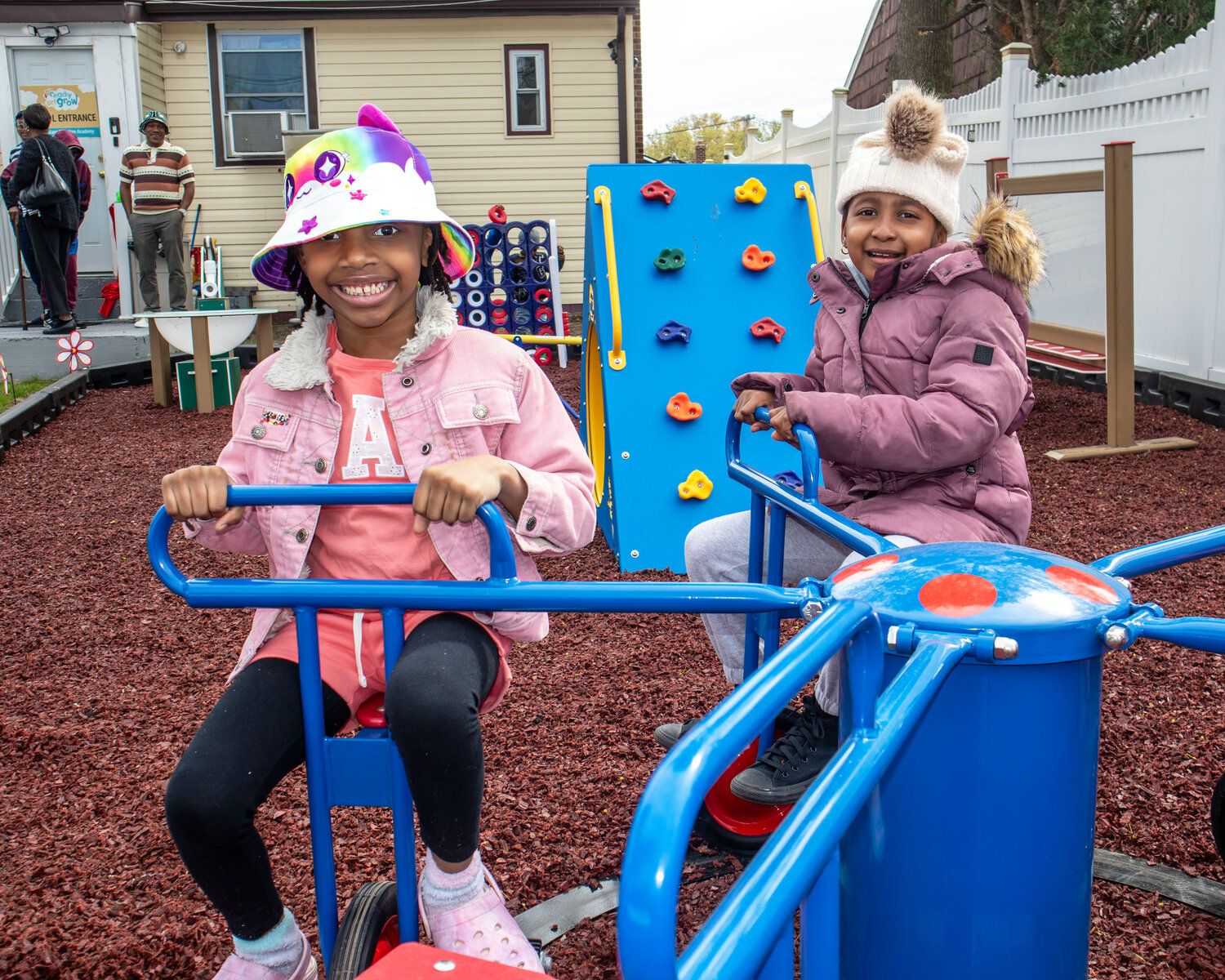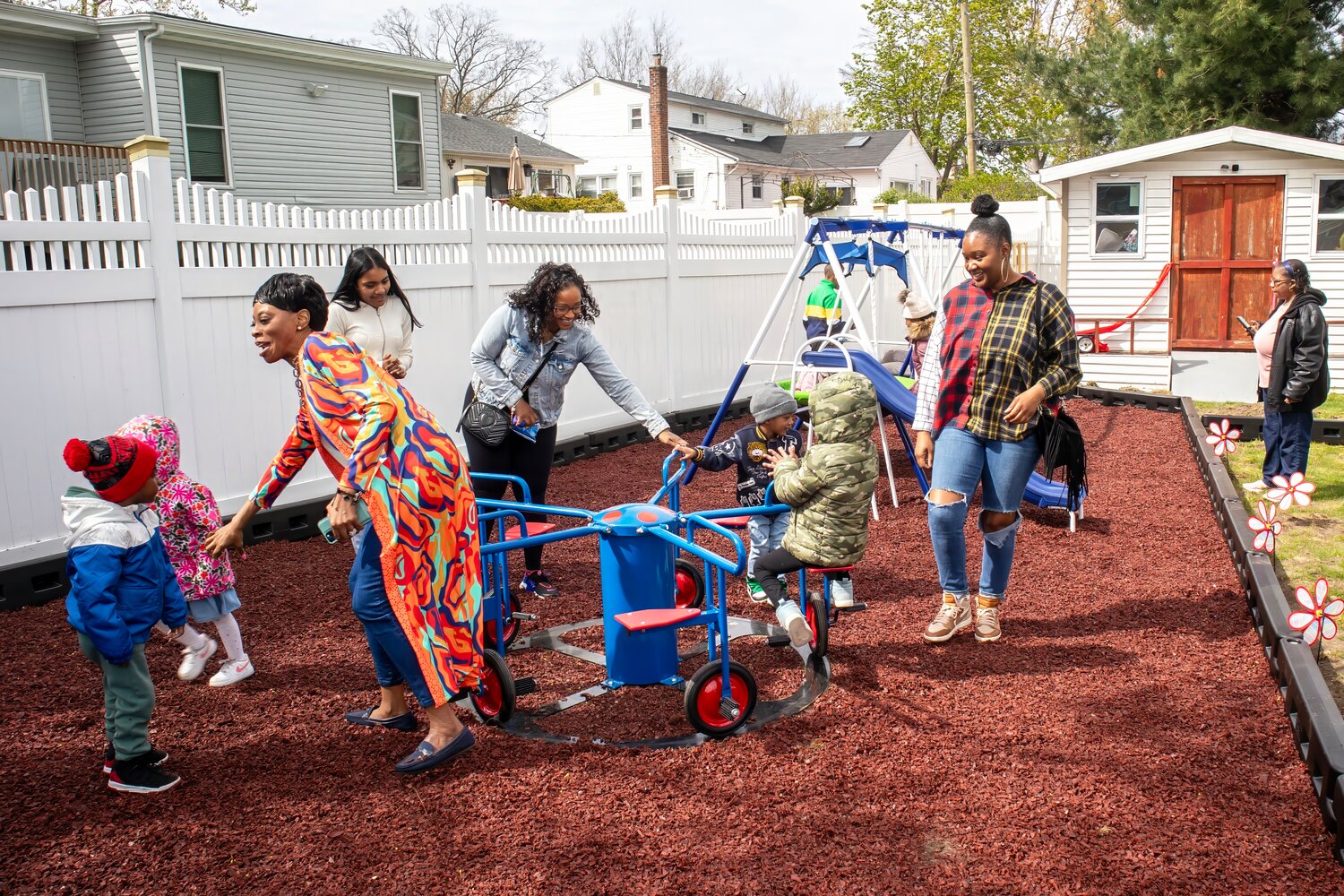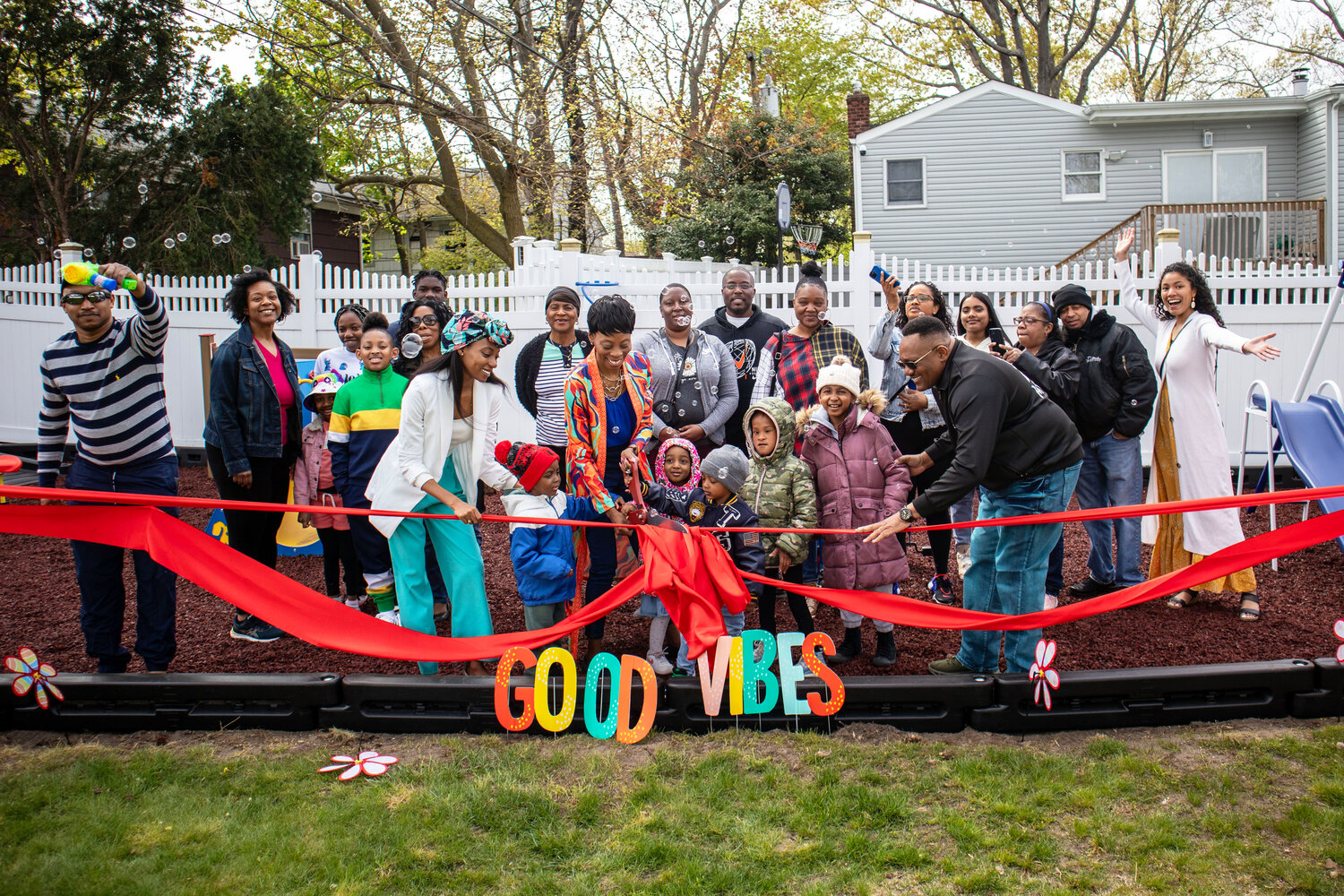Elite Scholars Christian Academy has a new playground. See how it takes indoor learning outdoors.
When playground design provides as much learning as it does play.
It was a grand yet intimate celebration for students and their families at Elite Scholars Christian Academy who gathered to welcome their new playground space. After a year of planning and construction, a part of the backyard of the Valley Stream-based daycare and early childhood education center has been turned into a modern play space.
Gone are the days of needing to borrow the playground space of the neighboring public school, Forest Road Elementary, which has always been a generous partner, noted CEO Paula Mills.
Creative fallback options for physical activity like out-of-school nature walks have been wonderful despite the lack of an in-house playground, noted Mills. But now that the preschool had a play oasis of its own, within a few steps of the school, immersive recreation is now readily accessible.
“Our backyard is large, and we would do our little ball games and such,” said Paula. “But we wanted something that would fully develop them physically.”
A large patron force behind the project, which covered most of the playground’s $13,700 price tag was QUALITYstarsNY, an organization that provides a voluntary rating system for childcare programs in the state alongside program guidance and support.
Mill’s preschool is comparatively modest to much larger and older nursery and childcare programs that dot throughout Valley Stream. The preschool, serving to children ages one to six, currently serves nine students. Yet Mills has been working with Stefanie Straker, a quality improvement specialist for QUALITYstarsNY, for some time now to “increase and sustain the quality” of the preschool at no cost to Mills.
“One of the goals that she had was to really create an engaging outdoor area that would be able to support the gross motor development of the children,” said Straker.
A new playground paradigm
The playground comes replete with the sort of things kids dream up for a fun day out — a climbing wall, a five-seat merry-go cycle, and a spout and splash. These play features develop children’s ability to move their limbs and use their senses, but it also nudges kids to stretch their social muscles on the playground, noted Straker, whether it be taking turns on the merry-go cycle or helping a friend up the wall.
The play space also spatially plays with the boundaries between inside and outside activities more seamlessly. A giant art easel, for example, is set up on the playground, giving the kids who want to paint or art doodle the option to either stay inside their usual indoor territory or take it outside.
As a reaction to the lost years of playing and extensive solitary confinement children went through during the Covid-19 pandemic, educators have been storming up ways to lengthen outdoor playing time without losing out on structured learning and engagement, usually inside the school, Straker noted.
“That’s why there is all this hype about having an art center or science center in playgrounds,” said Straker, pushing indoor learning activities outdoors. It’s not about simple swing sets and monkey bars, anymore.
It’s certainly a trend that is catching fire among educational providers, noted Straker, but all things considered, it’s a trend backed by the proven benefits of exposing children to time outdoors. “Being in fresh air and outside has so many wonderful effects on the brain for kids,” said Straker.
“The children love the new playground,” said Mills. “The playground will help us structure our day to cater more to all types of learners, especially those who are more hands-on, kinesthetic learners. We’re very excited about that.”
Have an opinion on this article? Send an email to jlasso@liherald.com.













